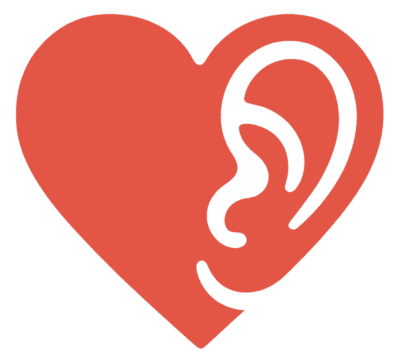Silence. Sometimes it feels like the enemy in conversation, doesn’t it? That little gap opens up, and there’s this almost frantic urge to fill it with… well, anything. Words, ums, ahs, just noise. Guess we just feel like we gotta fill every second? Maybe worried someone will jump in if there’s a gap? Especially if that happens a lot. Or like, if you pause, people will think you’re lost or something?
I know I used to feel like I had to talk fast, cramming all my points in before someone else jumped in or got bored. But over time, I’ve started noticing something powerful: the deliberate pause. Learning How women use pauses effectively in conversation for emphasis has been a real eye-opener.
It sounds counterintuitive, maybe. We often associate pauses with hesitation or uncertainty. But when used intentionally? Silence can actually make your words land with more weight. It can draw attention, give people a moment to actually absorb what you said, signal confidence, and even help you gather your own thoughts. It’s not about awkward, dead air; it’s about using brief moments of quiet strategically.
I used to admire people who could do this. They’d make a point, then just… stop. And everyone would lean in. Or they’d pause right before saying something important, and you just knew you needed to listen. It felt so much more impactful than just rattling off points nonstop. Learning to do it myself? Still a work in progress, honestly! Yeah, just… stopping talking for a beat? Feels super weird at first, doesn’t it? Like you’re doing something wrong.
How women use pauses effectively in conversation for emphasis
So, how can we actually use these little pockets of silence without feeling like we’ve stalled? It’s about intentionality. Here are some ways I’ve seen pauses used really well, or have tried to incorporate myself:
1. The “Listen Up” Pause (Before a Key Point)
You’re about to say something important – maybe the main conclusion, a critical piece of feedback, or significant news. Try taking just a brief pause right before you say it. Maybe make eye contact. That tiny beat of silence acts like a non-verbal drumroll. It signals to listeners, “Pay attention, this next bit matters.” It felt super dramatic the first few times I tried it, but even a half-second pause can create focus.
2. The Mid-Sentence Highlight Pause
This is about emphasizing a specific word or short phrase within your sentence. You pause very briefly just before or just after the word(s) you want to land.
- Example: “The real issue here isn’t the budget… it’s the communication.” (Pause before ‘communication’).
- Example: “We need to prioritize… customer feedback… above all else.” (Pauses around the key phrase).
It’s like underlining the word with silence. Just gotta be careful not to overdo it and end up sounding… like… William Shatner! Subtle is key.
3. The “Let That Sink In” Pause (After a Point)
This one might feel the most awkward initially, but it’s incredibly effective. After you’ve made a significant statement, asked a challenging question, or delivered your main point, just… stop talking for a second or two. Resist the urge to immediately explain, justify, or fill the silence. Give your listener(s) a moment to actually process what you just said. It shows confidence – you trust your words to stand on their own, and you trust your audience to think about them. This used to feel SO uncomfortable for me, like I needed to immediately soften or elaborate on what I just said. Learning to just sit in that post-point silence for a beat? Game changer.
4. The Thoughtful Pause (Before Answering)
And when someone asks a really good question… that pressure to answer right away! But sometimes just… stopping? Maybe looking up for a second, actually thinking about it… feels more honest? Saying “Hmm, let me think about that…” Better than just blurting something out. It shows you’re actually considering their question carefully.
5. The Regrouping Pause (For Yourself!)
Feeling rushed? Getting emotional? Starting to ramble or losing your train of thought? A deliberate pause is your friend! Just stop talking for a moment. Take a quiet breath. Re-center yourself. Gather your thoughts. Then continue more calmly and clearly. I use this one consciously when I feel myself getting worked up or talking in circles. It’s like hitting a mini reset button mid-conversation.
6. The Interruption-Deflecting Pause
And it’s funny, sometimes if someone starts talking over you, just… stopping? And looking at them? That little moment of quiet sometimes makes them realize, ‘Oh, oops, they weren’t done.’ Then you can just… pick up where you left off. It can work better than trying to talk louder.
Guess the way you’re quiet matters too… A pause where you look confident, maintain relaxed eye contact, and seem comfortable feels very different from a pause where you look panicked, avoid eye contact, and fidget nervously. The silence should feel intentional, not like you’ve simply lost your place (even if you are using it to find your place!). Short, purposeful beats usually work better than long, drawn-out empty spaces. Your tone leading into and coming out of the pause also contributes to its effect.

Quick Story: When the Pause Made the Point
I was in a discussion group once, and things were getting a bit heated, lots of people talking fast, ideas flying everywhere. One woman wanted to make a counterpoint. Instead of trying to shout over the noise, she waited for a fractional lull, leaned forward slightly, and then just… paused for about two full seconds, making eye contact around the table. Everyone stopped talking and looked at her. Then, she calmly and clearly stated her point. Because she’d created that silent space first, everyone actually listened. Her point landed with so much more weight than if she’d just tried to jump into the fray. It was such a simple, powerful demonstration of using silence to command attention respectfully.
Wrapping It Up for How Women Use Pauses In Conversation For Emphasis
So, how women use pauses effectively in conversation for emphasis – it’s about realizing that silence isn’t just empty space to be filled. It’s an active tool. Weird how just being quiet for a second can change things… Build anticipation. Highlight words. Let ideas sink in. Show you’re thinking. Help you catch your breath. Adds weight somehow.
Definitely doesn’t feel natural right away, though. Especially if you’re like me and tend to talk fast or feel like you have to fill the silence. Took me ages to get even slightly comfortable with it. But experimenting with these little beats of quiet can be a surprisingly powerful way to make sure your voice, and your message, truly lands. Give it a try – you might be surprised how loud silence can be.
Frequently Asked Questions
How can a thoughtful pause before answering a question improve communication?**
A thoughtful pause before answering shows that you are considering the question carefully, which can make your response seem more honest and considered rather than impulsive.
Why is pausing after making a significant statement effective, and how can it be done confidently?**
Pausing after a significant statement gives listeners time to process the information, demonstrating confidence that your words are strong enough to stand alone, and it involves resisting the urge to immediately explain or justify.
What is the purpose of a mid-sentence highlight pause and how should it be used?
A mid-sentence highlight pause emphasizes a specific word or phrase by pausing just before or after it, effectively underlining its importance, but it should be used subtly to avoid sounding unnatural.
How can pauses be used before delivering a key point to enhance its impact?
A brief pause right before delivering a key point acts like a non-verbal drumroll, signaling to listeners that the upcoming information is important and encouraging them to pay attention.
What is the significance of using deliberate pauses in conversation for women?
Deliberate pauses in conversation allow women to emphasize their points, convey confidence, give listeners time to absorb information, and help gather their thoughts, making communication more impactful.




